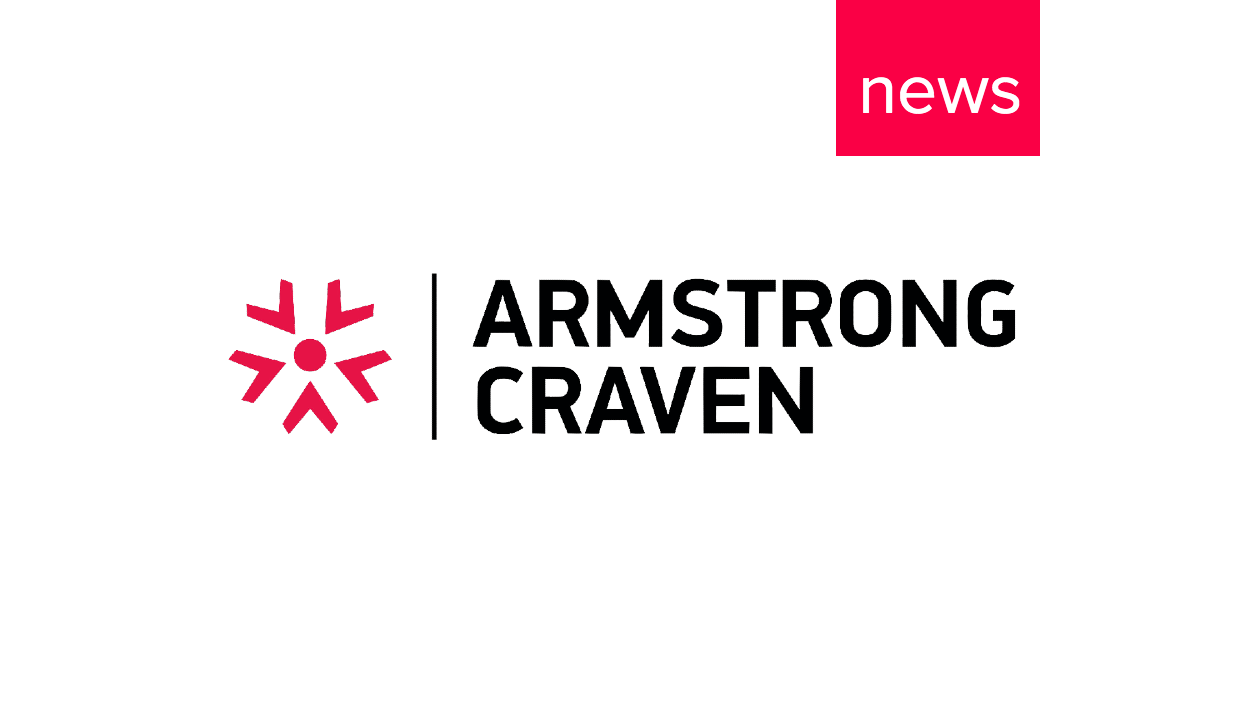Hiring Cross-Sector Talent
05 Jun, 201715 min
A guide to cross-sector hiring in industry
If you keep going to the cupboard and the cupboard is bare, then maybe it’s time to look in a different place? Rather than pursuing the same talent in the same pools, focus on recruiting the best, wherever that talent may come from.
It’s no secret that qualified engineering talent is as highly pursued as it is thin on the ground. Securing the right skills is tough. Not only are there fewer STEM qualified graduates entering the workforce, at the same time, the ‘big crew change’ is starting to have a serious impact. A generation of experienced senior and middle management is heading off into retirement.The candle is burning from both ends.
Some of the leading employers of engineering talent are already hiring cross-sector technical talent to great success. At Armstrong Craven we regularly find that while senior HR leaders are bought into the benefits of a broader talent pool, a strong technical skills mandate from the hiring manager can be a barrier. It’s time to re-position cross-sector hiring.
Cross-industry talent
According to PwC’s Annual Global CEO Survey, 64% of energy CEOs are worried about the availability of key skills [1]. The ‘dearth of skilled technical talent’ is seen as a significant threat to the industry’s ability to meet demand, as significant as the increasingly hard to access oil and gas reserves.[2]
Whilst industry-wide initiatives to encourage new generations to study STEM are underway, a different, more immediate approach is required to meet the needs of current and planned, resource-hungry oil and gas projects. It’s time to take a serious look beyond the industry, to source engineering talent laterally, broadening horizons in the form of actively investigating other sectors for the types of transferable engineering skills so desperately needed.
According to Dave Goodes, , Vice President Human Resources Marketing & Refining at Hess Corporation, “experience is still over-valued versus competency”. This type of thinking offers a rapid and powerful opportunity to mitigate some of the skills shortages that surround us in the oil and gas industry.
Where to find a good fit?
Many of the challenges your organisation faces are shared by other sectors; similar processes, similar complexities. There are of course unique issues specifically applicable to oil and gas, but business is business and people are people and no sector is an island. That’s what makes diversity both a key driver and an associated benefit of hiring out of sector.
When Armstrong Craven was looking to find ‘best in class’ diverse talent for a senior enterprise architecture role, the client’s original brief was that experience in oil and gas was essential. How would someone from outside the industry be able to understand the business drivers the enterprise architecture would support? After reflection, it was clear that similar models and challenges existed elsewhere. The upshot was the successful recruitment of a strong candidate from the utilities sector.
In search and pipelining assignments, we find a good degree of synergy between industries such as chemicals or pulp and paper which have requirements in common with downstream operations. We have also had success further afield with candidates from FMCG, cosmetics, aerospace, medical, construction, mining, marine and pharmaceuticals, where there is education and some science in common. Having placed cross-industry hires in leadership roles, we are beginning to extend this thinking to the technical space.
A cross-sector approach works well when the brief is for a technical role with strong leadership skills. For example, an engineer who has already made the transition from individual contributor to manager or a senior engineering leadership role could be a perfect candidate. At this level the balance is less focused on technical skills and more about leading other technical people.
Why consider cross-sector talent?
Cross sector talent provides an injection of the kinds of new ideas and fresh approaches; input that contributes essential differentiators in a fiercely competitive marketplace. At Armstrong Craven we have long understood the benefits of creative recruitment, of thinking beyond a single sector which is why we are keen to encourage our clients to think laterally:
A broader talent pool: top technical talent comes from all walks of life and by narrowing the brief to a niche part of an industry, hiring managers could be missing out on great people that are not in that finite pool. You may also find you’re the first to find talent in a place your competitors aren’t looking.
Qualified talent: all engineering talent has some skills and competencies in common and there are plenty of cross-sector opportunities for chemists and engineers who have similar educational backgrounds regardless of the professional path they have taken so far.
A fresh perspective: those from different industries bring a refreshingly different point of view and learnings from another environment.
Diversity: inclusion and diversity make for an agile workforce. Diversity extends to skills and professional background too.
Adaptability: for leaders within any sector, the key ingredient to business success is adaptability.
Risk: risk is not as significant as hiring managers believe. Technical talent that has been identified and approached is already part of a well-qualified talent pool.
How to recruit out-of-sector
Cross-sector hiring requires a different approach to sourcing candidates, interview and on-boarding.
Define talent: what you think you want and what you actually need can be two very different things. What contributions will your organisation genuinely benefit from? You may need to review how you are assessing talent with an approach focused on key competencies and transferable skills.
Salary expectations: supply and demand dictate that premium people command a premium rate. Other sectors may pay more for the same skills so what else can you do to attract the talent you need? How carefully do you manage the candidate experience? What about the package as a whole?
Reputation: awareness can be an issue. As recognised as you are in your space, your employer brand and employee value proposition may not be as well known in a different sector. Candidates will want to find out more about your organisation during the process and it’s important that your employer brand is conveyed.
Interviewing skill: hiring managers need to be well-prepared for interview and HR will undoubtedly have a role to play in preparing managers. Managers need to be able to interview beyond skills and focus on behavioural rather than technical competencies. Interviewers should be prepared for the candidate to give examples that relate to another industry and be able to identify the transferable skills in that.
Manage risk: during the process explain not only the role and organisation but talk about the industry as well. It is important to gather an in-depth understanding of the candidate’s motivations and aspirations as the potential move is a big commitment for the candidates as well.
Employer brand: talking to talent from outside your sector can yield important feedback about your employer brand. In cross-sector career conversations, we gather intelligence about perceptions of a hiring organisation and its competitors. We feed this back as part of the process to help inform approaches to employee value proposition.
On-boarding: Successful, sustainable acclimatisation means a proper investment in training and on-boarding. It is essential that out-of-sector hires get the support to integrate into an unfamiliar environment.The process does take longer but as our clients tell us, the investment is worth it.
Case Study: Cross Sector Hiring at Shell
Gerard Penning, Executive Vice President Human Resources Downstream at Shell, explains that Shell is actively recruiting leadership talent from other sectors. The key qualities he looks for – adaptability. He seeks “curiosity and a willingness to learn”, adaptability that reveals itself as:
- The capacity to work globally - a person with the sensitivity and the emotional intelligence to respect cultures and local customs, to build networks internationally.
- The ability to take a long view - it takes a certain intuitive confidence to defer the quick win for the greater longer term prize.
- The ability to adapt - things change, politically, economically and technically. It takes talent to be able to “shoot at a moving target”.
A change in mind-set
Leadership success is about the right behaviours and mind-set, not only specific sector experience. Forward-thinking companies, the kind of companies making very deliberate efforts to go above and beyond their sectors to source exceptional leadership talent already know this and already benefit.
Get it right and a skilfully sourced and carefully integrated employee is a positive, productive contributor. In the words of Gerard Penning at Shell; “On-boarding is not a one-way street”. In other words, ask not only what you can do for your new hire, ask what they can do for you. Penning sees great value in what Shell can learn from other sectors and industries, and encourages new hires to be careful not to lose their external perspective.
A broader approach will doubtless demand a little more investment in the short term. A commitment that over time will look utterly insignificant when measured against the benefits of the new energy, the fresh perspective and the broader transferable skill sets contributing to the business.
Nina Johnson is a Client Partner in Armstrong Craven's Industrial Practice
[1]February 2014 17th Annual Global CEO Survey – Key findings in the energy industry, PwC
[2]Bain, Shaping the Supply of Talent, December 2011
Speak with an expert
If you want to learn a little more about what we do and how talent research can help you make better-informed business decisions, our team of talent research and consulting specialists are happy to help.






